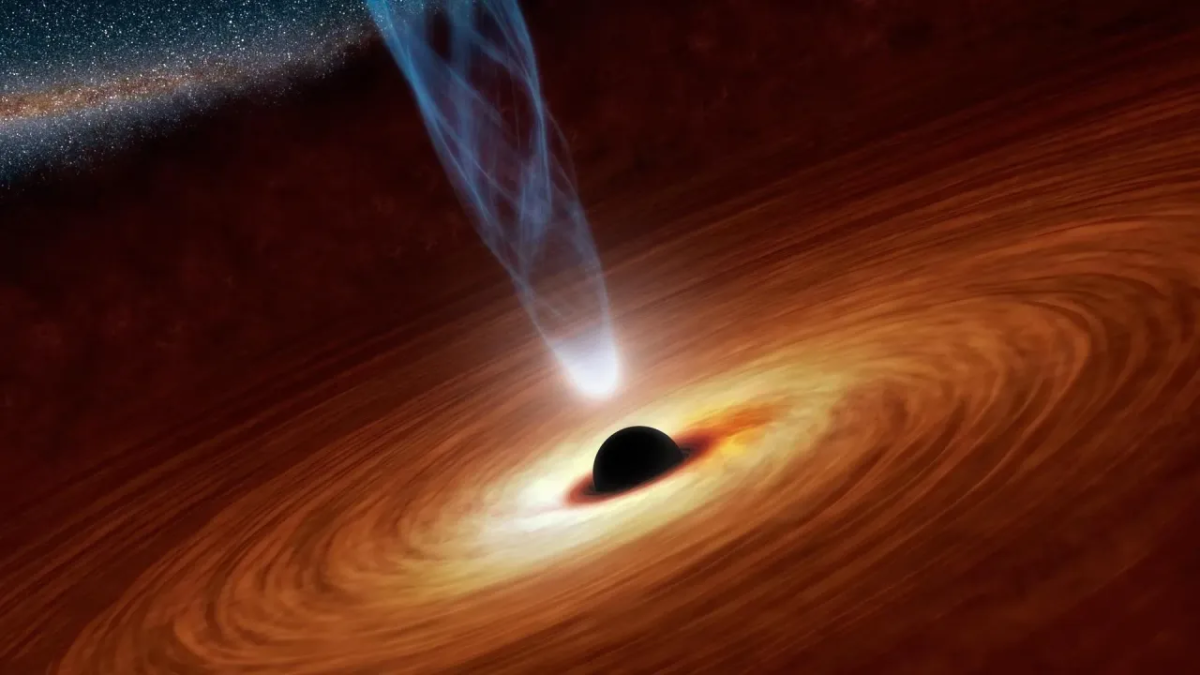The universe as we know it is controlled by hundreds of unspoken rules, arguably the most influential of which is gravity. Its immense pressure is formed by the accumulation of mass, which leads to ultra high compressions warping our perceptions of space and time on its edges, a.k.a black holes.
But before discussing black holes we need to understand the concept of gravity. The term gravity was first coined by Issac Newton in the mid 17 and early 18th centuries, referring to the attraction objects had to each other (Thompson & Havern). This term did not refer to objects’ direct attraction but rather the mathematical equation which defines the attraction. Simply put, according to NASA, (Imagine the universe!), as the mass of an object increases, so does its gravitational attraction, which is why we’re all pulled towards earth, it’s due to its size.
With that in mind we can now learn the fundamentals of a black hole. Black holes are points in space with tremendous gravitational attraction and humongous amounts of mass in a very small space. Forming from the collapse of stars, black holes create gravity so strong that it sucks everything along its horizon into its abyss, where it is then added to its center of mass, commonly known as the singularity. The singularity is where all the mass entering the black hole is compressed into an ultra small point.
From this definition it may seem as though black holes are incredibly powerful and can last forever in a potentially infinitely expanding universe. However that is not the case. Black holes slowly lose mass. That doesn’t mean that what enters will be spit back out, but is released as radiation. We now refer to this as Hawking’s radiation, as coined by Stephen Hawking, in the late 1900s (Hawking’s Black Hole Theorem Observationally Confirmed). These radiation particles actually have mass, allowing blackholes to slowly shrink over the course of hundreds of millions of years.
So how does this relate to the end of the universe you may ask? Over the course of billions of years, the sun will expand until the majority of our solar system has been burnt up. Leading the end of our sun’s life, presumably as a white dwarf star,”after they have exhausted their nuclear fuel. … this type of star expels most of its outer material creating a planetary nebula.” (Imagine the universe!). These nebulas will be the birthplace of new stars and planets. However should the white dwarf absorb too much mass it can supernova (Zide). These processes are similar to a miniversion of the universe in that they are ever changing.
The universe is understood to be controlled by two forces, the thrust from the Big Bang causing the universe to expand at a rapid rate, and the gravitational pulls created when matter clumps together. There are two widely accepted ideas to the end of the universe, both are opposites of each other. There is the Big Crunch as well as the Big Freeze or Heat Death. Both of these scenarios are decided by which of the opposing forces wins.
The Big Crunch assumes that gravity will prevail, growing too strong for the expanding speed of the universe, causing everything to slowly, over the course of billions of years, come crashing together into what would be the largest black hole in existence as it would absorb all mass and energy before dying and leave nothing but radiation behind. (University Today, The Big Crunch)
On the other hand, the Big Freeze or the Heat Death of the universe assumes the opposite. By assuming that the expansion of the universe will be too fast for gravity to compress, the theory states that all matter will eventually achieve its max entropy, a way to measure an energy level in a closed system (Merriam Webster). As such, all mass will be equally distributed across the universe granting any further mechanical movement, a cold slow death.
None of that really matters today because there are thousands of theories on how the universe may end, some more credible than others, and these were just a few. Nevertheless it’s important to remember that these events take time, over the course of trillions of years, meaning everyone reading this or who will ever read this will be long gone.

































Anne Dammarell • Feb 29, 2024 at 4:54 pm
I this article because I now understand concepts which were previously muddy mysteries.